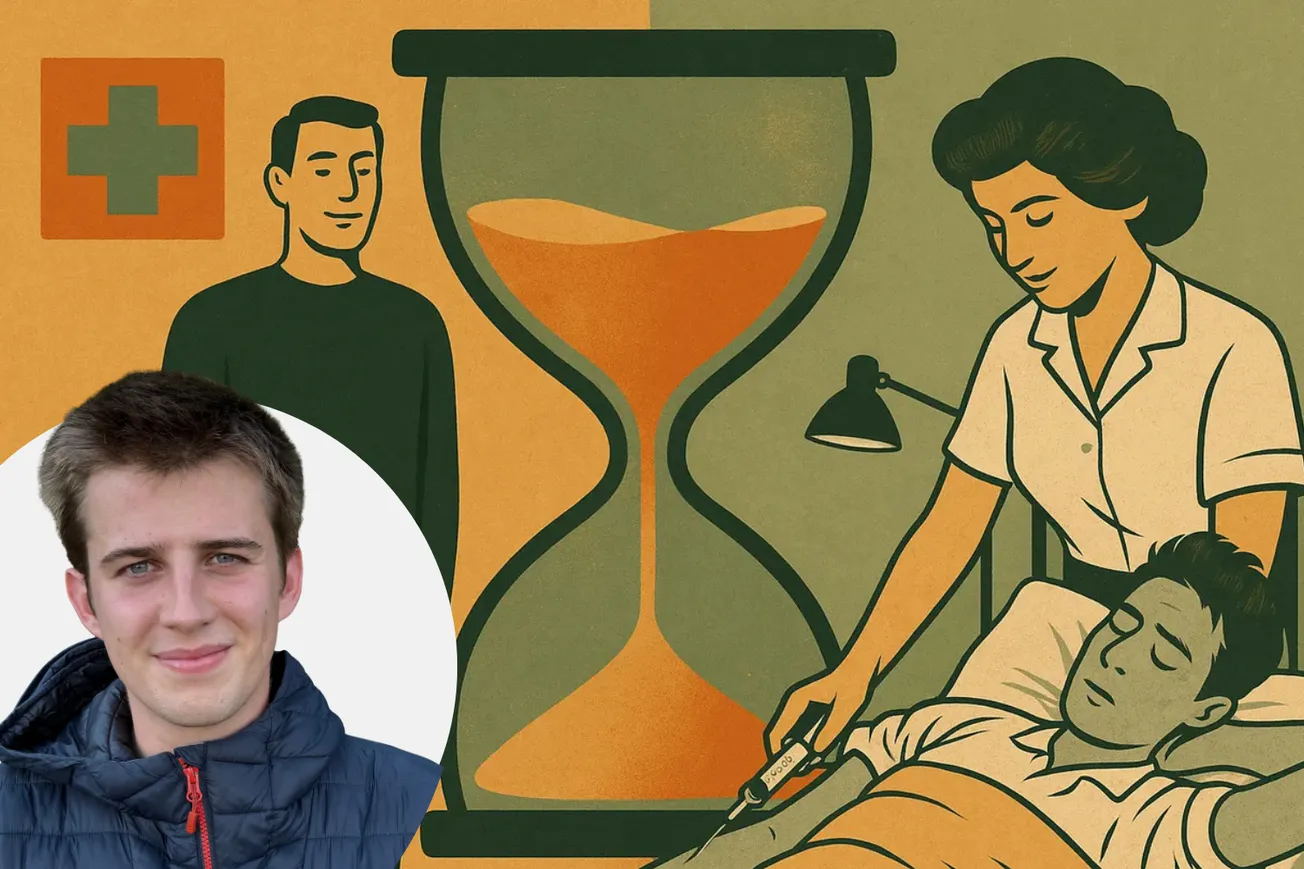Table of Contents
Introduction
In their 10-year health plan, the Department of Health and Social Care (DHSC) identified three ‘shifts’ in the way that the NHS should operate to ensure its future [1]. One of these shifts changes the priorities of the healthcare system away from simply treating sickness to preventing disease occurring in the first place.
This is not a new priority for British governments, whether they are drawn from the Labour benches or from the Conservatives, having been discussed in the Long-Term Plan 2019 regarding how policy can induce behavioural changes in citizens to tackle diabetes, heart attacks and strokes [2]. However, this enthusiasm has not been evidenced by subsequent healthcare spending.
In fact, preventative care spending fell from 14.1% to 5.2% of government healthcare spending, under the Conservatives, between 2021-2023 [3].
The current plan partners legislation with technological breakthroughs, with a particular commitment to tackle modifiable disease – notably through increasing accessibility to physical activity [1]. You may recall earlier this year, the new Labour government introduced a series of welfare cuts and reforms that aimed to reduce public spending on welfare by £5 billion [4]. After threats of rebellion, Starmer's government yielded, and their idea to tighten the criteria needed to claim the Personal Independence Payment (PIP) until an independent review could be conducted [5], is now dead in the water.
The initial proposal could have seen 250,000 people pushed into relative poverty and highlighted the current government’s hostile attitude towards welfare [4].
When it comes to the initiative to promote physical activity, not only does the current attitude towards welfare subvert this objective, but it risks deepening health inequalities. This contradiction acts as a case study that highlights the need for cross-policy coordination when it comes to disease prevention.
Prevention Through Physical Activity
The science behind the preventative effects of physical activity on disease is undeniable, with many studies displaying a link between physical activity and reductive effects on both mental and physical ailments [6] [7].
Considering this, the current government has pledged £400 million worth of investment to community sport facilities to improve accessibility to physical exercise for the local population [1]. This initiative allows for physical activity programs to be tailored to the needs and demographics of local communities and is underlined by the principle that community-based activity initiatives are more effective when the local population has been considered.
The DHSC cite the ‘Place Partnership’ program, a long-term collaboration between Sport England and local leaders, policy makers and organisations to increase accessibility to physical activity [8]. According to Sport England, these partners saw a 2.5 times faster reduction in physical inactivity than equivalent areas in the country, an impressive feat that the government is right to capitalise on [1] [9].
However, the government has seemingly overlooked some of the personal barriers to physical activity – such as lack of time and income. It has been observed that there is an association between household income and sustained physical activity, with lower income households more likely to be physically inactive than higher income counterparts.
This is despite controlling for local area characteristics, such as green space, types of sports facilities and satisfaction with the facilities available – variables that the investment policy resulting from the plan can directly influence [10]. With 3.7 million claiming PIP, it follows that reducing access could reduce household income for claimants, thereby having a knock-on effect on their ability to engage in physical activity, despite the government’s proposed investments [11].
This conclusion is further compounded when one considers that a significant proportion of claimants on PIP are also likely to already suffer barriers to physical activity, even when accounting for income. Welfare cuts and reforms could put people at higher risk of the very diseases that the DHSC is trying to prevent through the plan.
The impact of socio-economic status on health was recognised in the 2019 Plan, with reference to the widening disparity between the prevalence of childhood obesity in the most and least deprived areas of England [12].
According to the latest statistics, published in 2024, this gap hasn’t decreased significantly - reaching a high in 2021 [13]. Parliamentary opposition to proposed welfare reform also includes reference to health implications; the Green Party were vocal in their concerns that cuts could lead to increases in ‘health insecurity’, particularly for children [14].
In their analysis, The British Medical Association highlighted their concern that a ‘punitive’ welfare system risks harming peoples’ wellbeing by forcing them into work. Additionally, they call on Starmer's government to uphold resource commitments to make ‘active travel’ accessible in local communities [15].
Clearly, this issue is politically topical and influential pressure groups may succeed in partially neutering the Labour government’s current attitude. However, the balance of competing interests is currently in the government’s favour, owing in part to their large parliamentary majority.
Conclusion
On balance, whilst the plan seeks to transform the NHS from a so called ‘sickness service’ into one that is equipped to not just treat patients from disease, but prevent their incidence entirely, the government’s current attitude towards social care risks undermining this objective. Both the evidence available and the logical implications that follow suggest that these cuts can further contribute to health inequalities.
The extent to which this conclusion holds true depends on whether any potential savings derived from welfare reform can be re-invested into local governments, such as community exercise initiatives specifically targeted at the demographic most likely to claim PIP.
For example, in-home exercise equipment could be provided to those who may be at a disadvantage to changes in PIP. However, this is unlikely to provide much of a buffer to a loss of income, especially if those affected must spend more time working part-time jobs to make ends meet at the expense of time spent exercising.
Although the NHS is the most well-known development to come out of the post-war Welfare State, it is prudent to remember that it emerged with the National Assistance Act, a means to ensure that all citizens had an acceptable level of income [16]. Future governments should bear this cross-policy effort in mind when considering healthcare reform, especially preventative health initiatives.
References
1. Department of Health and Social Care. 10 Year Health Plan for England: fit for the future, CP 1350. Published 2025.
2. https://www.kingsfund.org.uk/insight-and-analysis/long-reads/nhs-long-term-plan-explained Accessed 06.07.2025
3. Office for National Statistics (ONS), released 30 April 2025, ONS website, statistical bulletin, Healthcare expenditure, UK Health Accounts: 2023 and 2024
4. Murray J. Welfare bill will now lift 50,000 out of poverty after U-turns, assessment finds. The Guardian 2025
5. Godfrey B. 'Young people's views on welfare reforms ignored'. BBC News 2025
6. Rebar AL, Stanton R, Gerad D, et al. A meta-meta-analysis of the effect of physical activity on depression and anxiety in non-clinical adult populations. Health Psychology Review 2015; 9: 366-378
7. Warburton D, Nicol CW, Bredin S. Health benefits of physical activity: the evidence. Canadian Medical Association Journal 2006; 6: 801-809
8. https://www.sportengland.org/funding-and-campaigns/place-partnerships?section=learning_and_resources-section#working-with-local-authorities-35518 Accessed 07.07.2025
9. Sport England. The English Sports Council Grant-in-Aid and National Lottery Distribution Fund: Annual Report and Accounts for the year ended 31 March 2024. HC 654. Published 2025.
10. Farrell L, Hollingsworth B, Propper C, Shields MA. The socioeconomic gradient in physical inactivity: Evidence from one million adults in England. Social Science and Medicine 2014; 123: 55-63
11. Department for Work and Pensions. Personal Independence Payment Official Statistics to January 2025. Published 2025
12. NHS England. The NHS Long Term Plan. Published 2019.
13. Office for Health Improvement & Disparities. Obesity Profile: statistical commentary, November 2024 [Online]. Available at: https://www.gov.uk/government/statistics/obesity-profile-november-2024-update/obesity-profile-statistical-commentary-november-2024#references Accessed 29.09.2025
14. https://greenparty.org.uk/2025/06/10/greens-denounce-labours-spending-review-as-spreadsheet-britain-and-call-for-a-hopeful-vision-for-a-better-future/ Accessed 29.09.2025
15. British Medical Association. The 10 Year Health Plan: A BMA analysis [Online]. Available at: https://seftonlmc.co.uk/wp-content/uploads/2025/08/10-Year-Health-Plan-BMA-Full-Analysis-Final.pdf Accessed 29.09.2025
16. Crafts, N. The welfare state and inequality: were the UK reforms of the 1940s a success?. IFS Deaton Review of Inequalities 2023.
Author: Ben Phillips lives in the U.K. and is a third-year medical student at the University of Sheffield.






